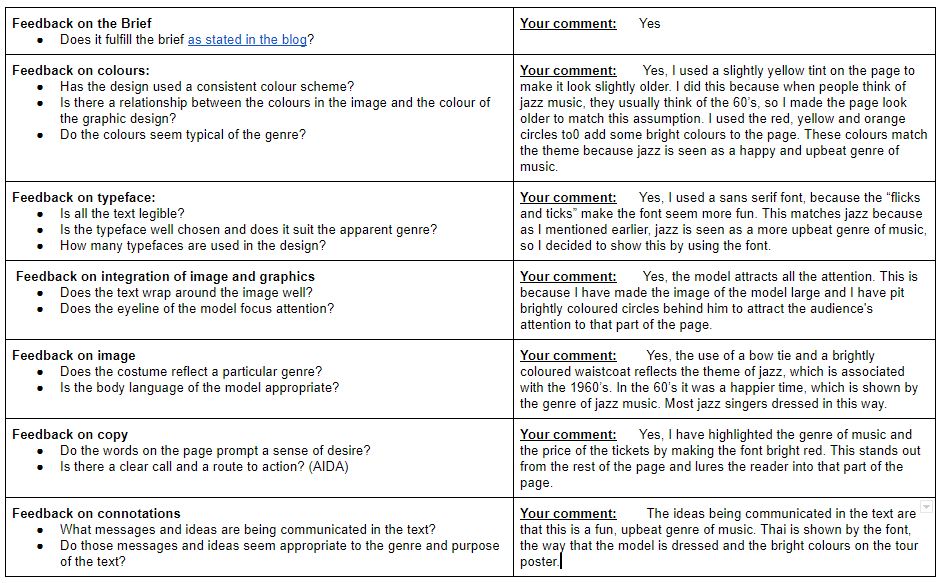 All magazines, music or not, have certain features that they share with many other magazines. These features are mostly used to gain the readers attention. This may be by using bright colours or by using a large font. These features are called conventions. We analysed a magazine cover that we were given and had to identify the different convetnions that were on the magazine. Some of the conventions were missing from the cover, but the magazine still catches the audiences eyes.
All magazines, music or not, have certain features that they share with many other magazines. These features are mostly used to gain the readers attention. This may be by using bright colours or by using a large font. These features are called conventions. We analysed a magazine cover that we were given and had to identify the different convetnions that were on the magazine. Some of the conventions were missing from the cover, but the magazine still catches the audiences eyes.
The mast head is the first convention that I am going to explain. The mast head is the large piece of text across the top of the cover. The mast head is normally in a very larger, bold font in a bright colour to get the attention of the audience. Sometimes, the colour and font can match the theme. In the magazine cover that we analysed, the mast head wast orange, as were the cover lines (little bits of text on the sides of the magazine). This matches the theme of the magazine, which is jazz, because jazz is known for being a happy, upbeat genre of music. Many of these things can be said about the colour orange as well.
The main cover star is the main focus point on the cover of the magazine. All magazines should have a main cover star. On our magazine, it was the man playing the trumpet who was the main cover star. one of the conventions that was missing from our magazine was captions. Captions are the pieces of text underneath a photo, but as our magazine had no extra photos on the cover, there was no need to add captions. There are also many other conventions that I havent mentioned, these are: Main cover line, insets, pugs, plugs, issue date, price and barcodes.
I will need to consider all of these conventions when I come to making my magazine as well.










 All magazines, music or not, have certain features that they share with many other magazines. These features are mostly used to gain the readers attention. This may be by using bright colours or by using a large font. These features are called conventions. We analysed a magazine cover that we were given and had to identify the different convetnions that were on the magazine. Some of the conventions were missing from the cover, but the magazine still catches the audiences eyes.
All magazines, music or not, have certain features that they share with many other magazines. These features are mostly used to gain the readers attention. This may be by using bright colours or by using a large font. These features are called conventions. We analysed a magazine cover that we were given and had to identify the different convetnions that were on the magazine. Some of the conventions were missing from the cover, but the magazine still catches the audiences eyes.